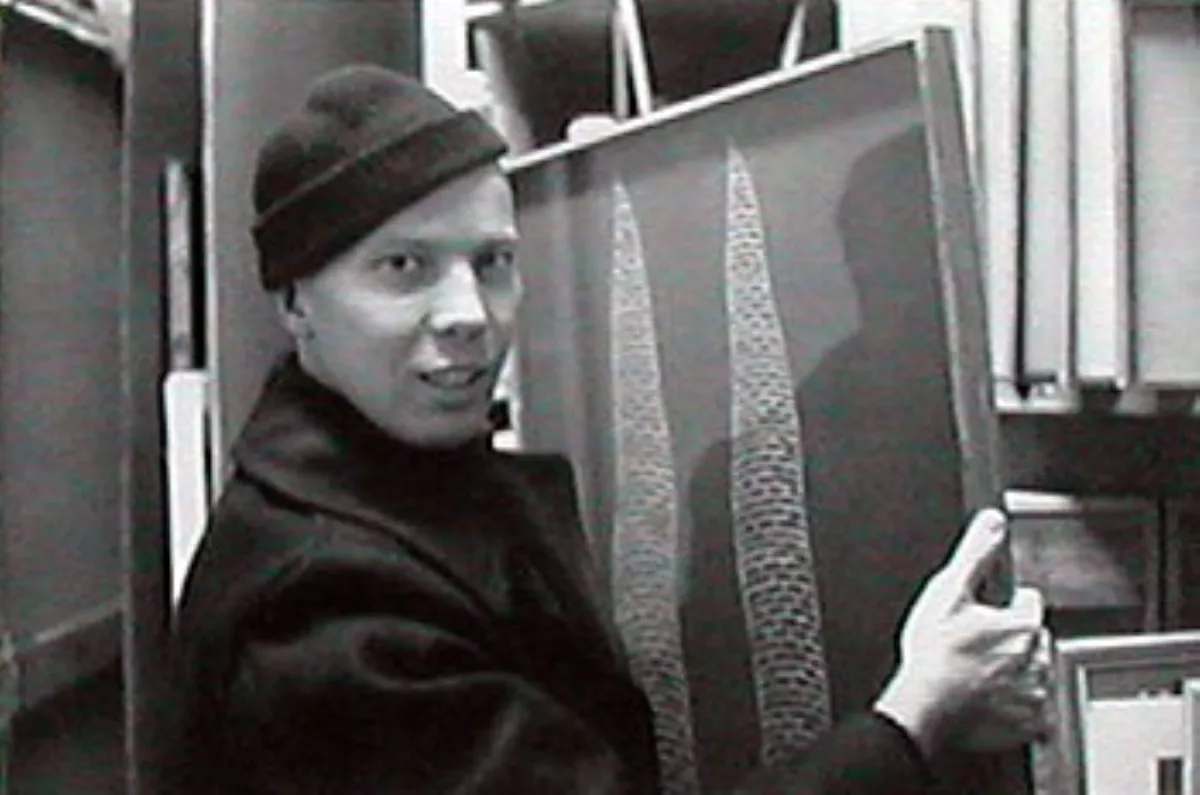 1.
1. Raymond Edward "Ray" Johnson was an American artist.

 1.
1. Raymond Edward "Ray" Johnson was an American artist.
Ray Johnson is occasionally associated with members of the Fluxus movement but was never a member.
Ray Johnson lived in New York City from 1949 to 1968, when he moved to a small town in Long Island and remained there until his suicide.
Ray Johnson took weekly classes at the Detroit Art Institute and spent a summer drawing at Ox-Bow School in Saugatuck, Michigan, affiliated with the Art Institute of Chicago.
Ray Johnson left Detroit after high school in the summer of 1945 to attend the progressive Black Mountain College in North Carolina, where he stayed for the next three years.
Ray Johnson decided on Albers' advice to stay at BMC for a final term in summer 1948, when the visiting faculty included John Cage, Merce Cunningham, Willem de Kooning, Buckminster Fuller, and Richard Lippold.
Ray Johnson moved with Richard Lippold to New York City by early 1949, rejoining Cage and Cunningham and befriending, within the next couple of years, Robert Rauschenberg, Jasper Johns, Cy Twombly, Ad Reinhardt, Stan Vanderbeek, Norman Solomon, Lucy Lippard, Sonia Sekula, Carolyn Brown and Earle Brown, Judith Malina, Diane di Prima, Julian Beck, Remy Charlip, James Waring, and innumerable others.
Ray Johnson began to create small, irregularly shaped works incorporating fragments from popular culture, most notably the Lucky Strikes logo and images from fan magazines of such movie stars as Elvis Presley, James Dean, Marilyn Monroe, and Shirley Temple.
Ray Johnson carried boxes of moticos around New York, showing them on sidewalks, at cafes, in Grand Central Station and other public places; he asked passersby what they thought of them, and recorded some of their responses.
Ray Johnson worked part-time at the Orientalia Bookstore in the Lower East Side as he began to deepen his understanding of Zen philosophy and to employ "chance" in his work.
Ray Johnson had met Andy Warhol by 1956; both designed several book covers for New Directions and other publishers.
Ray Johnson had a series of whimsical flyers advertising his design services printed via offset lithography, and began mailing these out.
The first of these, "Nothing by Ray Johnson", was part of a weekly series of events in July 1961 at the AG Gallery, a venue in New York operated by George Maciunas and Almus Salcius; Yoko Ono's first solo show was on view in the gallery at the time.
In early 1962, Joseph Byrd responded to several mailings with a red rubber stamp, "THIS IS NOT ART," which Ray Johnson then used in his mailings for several months.
Ray Johnson produced 13 known unbound pages of his enigmatic A Book About Death from 1963 to 1965.
Ray Johnson saved all these things, designed and published a book, and I simply as an artist did what I did without classification.
Severely shaken, Ray Johnson moved to Glen Cove, Long Island, and the next year bought a house in nearby Locust Valley, where Richard Lippold and his family resided.
From 1966 into the mid-1970s, Ray Johnson's work was shown at the Willard Gallery and Feigen Gallery, as well as by Angela Flowers in London and Arturo Schwarz in Milan.
Around that time, Ray Johnson began his silhouette project, creating approximately 200 profiles of personal friends, artists, and celebrities which became the basis for many of his later collages.
Ray Johnson feverishly continued to work on richer and more complex collages, such as Untitled, in the collection of the Honolulu Museum of Art.
On January 13,1995, Ray Johnson was seen diving off a bridge in Sag Harbor, Long Island, and backstroking out to sea.
Ray Johnson's body washed up on the beach the following day.
Ray Johnson left no will and his estate is administered by fine art dealership Adler Beatty.
Over seven hours of videos with Ray Johnson were created by Nicholas Maravell in the late 1980s.
Ray Johnson greatly enjoyed the creative process of making them and liked viewing them.
Ray Johnson had wanted the videos to be played at his final scheduled gallery exhibition but at the last minute he had reason to cancel that show and he asked that the videos not be shown.
Locust Valley is the town where Ray Johnson lived in New York State.
Venice Lockjaw is a phrase Ray Johnson incorporated in pins that he made to be given away at the Ubi Fluxus ibi Motus exhibit in 1990 at the Venice Biennale.